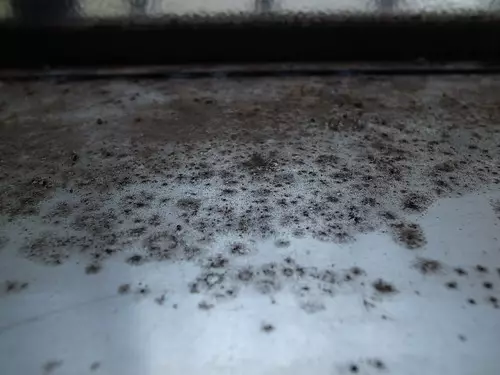
How to Find Hazards Hiding in Your Home
Think of it as adult Hide and Go Seek–the mold hides, you seek to get rid of it. But where should you look? Why should you find it? What are the risks of not cleaning it?
What Mold Can Do
Several years ago in Indianapolis, many homes in wealthy neighborhoods became infested with black mold after a builder took shortcuts. One family had mushrooms start growing in their carpet. A second family had to go to a hotel because the husband/father was in recovery from cancer. Another family offered their guests surgical masks to help fight the stench.
Mold can make you sick or cause an already present respiratory illness to worsen. According to MedicalNewsToday.com, symptoms of black mold exposure include coughing, wheezing, nasal congestion, runny nose, red eyes, itchy skin or eyes, and nosebleeds. Long-term exposure can cause mycotoxicosis.
Mold can be a hidden danger in your house

Where Mold Can Hide
- Ceiling fans. While an extender is sufficient for a monthly cleaning, a few times per year you should vacuum it with a brush attachment, then wipe down with a solution of 1:1 bleach and water, then dry with a dryer sheet. Be warned–this can trigger allergies.
- The refrigerator. The drip pan should be cleaned annually with a solution of one teaspoon hydrogen peroxide to one cup water, according to HouseLogic.com, and wiped clean with a rag soaked in white vinegar.
- Air conditioner. To prevent mold, according to HouseLogic.com, keep humidity in your home below 55 percent and run your AC for 10 minutes at least once every 24 hours in warm weather. If mold has already grown in a central AC, call an HVAC professional. If it’s a window unit, remove the front, vacuum the blower with a HEPA filter, flush out the coils, and clean the drain pain with a solution equal parts bleach and water. Also change your natural air filter frequently–this is, after all, the air you’re breathing.
- Window attire. QuickAndDirtyTips.com reports that drapes, curtains, window blinds, and shutters are also notorious dust collectors. To clean drapes or curtains, throw them in the washing machine (if the fabric is washable), but check before drying to make sure the fabric won’t shrink. Do this twice annually. For window blinds and shutters, vacuum both sides, then wipe both sides of each slat with a bucket of warm, soapy water and dry each individual slat with a dryer sheet. To prevent mold from growing on the sill or seals, open the window after a storm and wipe them dry.
- Front-loading washing machine. According to HouseLogic.com, the gasket that connects the door to the dryer on a front-loading washing machine is a frequent mold magnet, largely because it never gets a chance to dry since the door is typically closed when not in use. To prevent mold, wipe the gasket and glass dry before closing the door. If you spot mold, run a hot water cycle (no clothes) with some chlorine bleach.
When it comes to cleaning, remember that an ounce of prevention beats a pound of cure. It is far easier on your sanity and your wallet to prevent black mold than it is to treat it once it arrives. You can always contact GA pest control companies to solve your problems.
You May Also Like

10 Reasons Why Santorini is the Place to go
August 11, 2017
#HAPPYBEAUTIFULYEAR WITH WATSONS!
February 1, 2017


